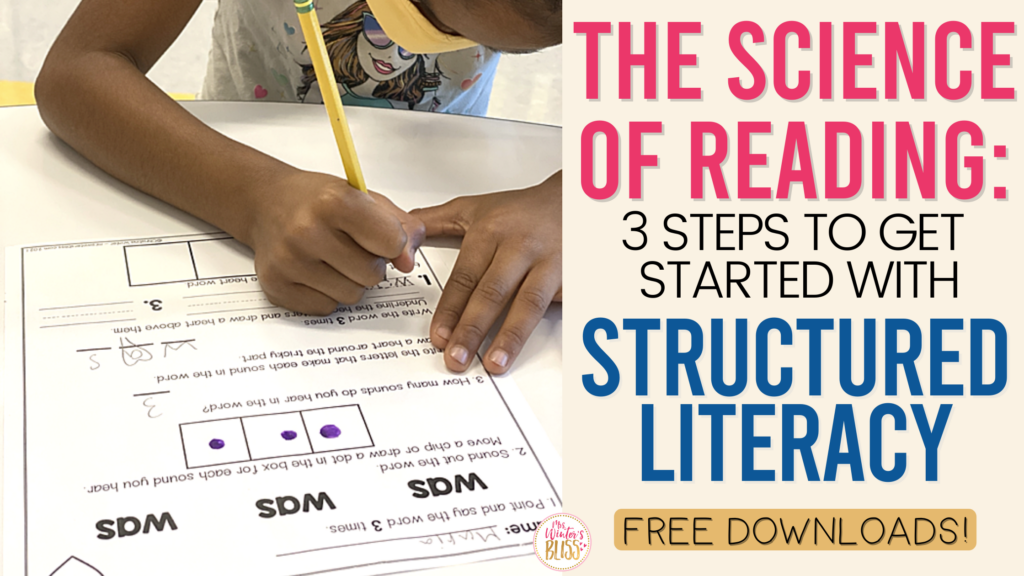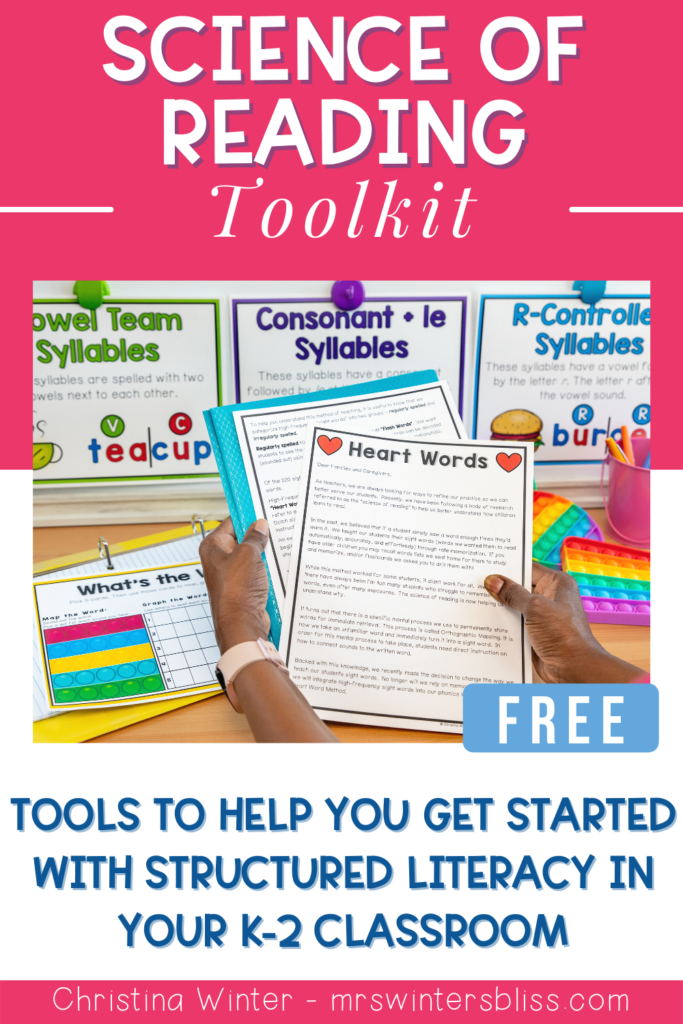
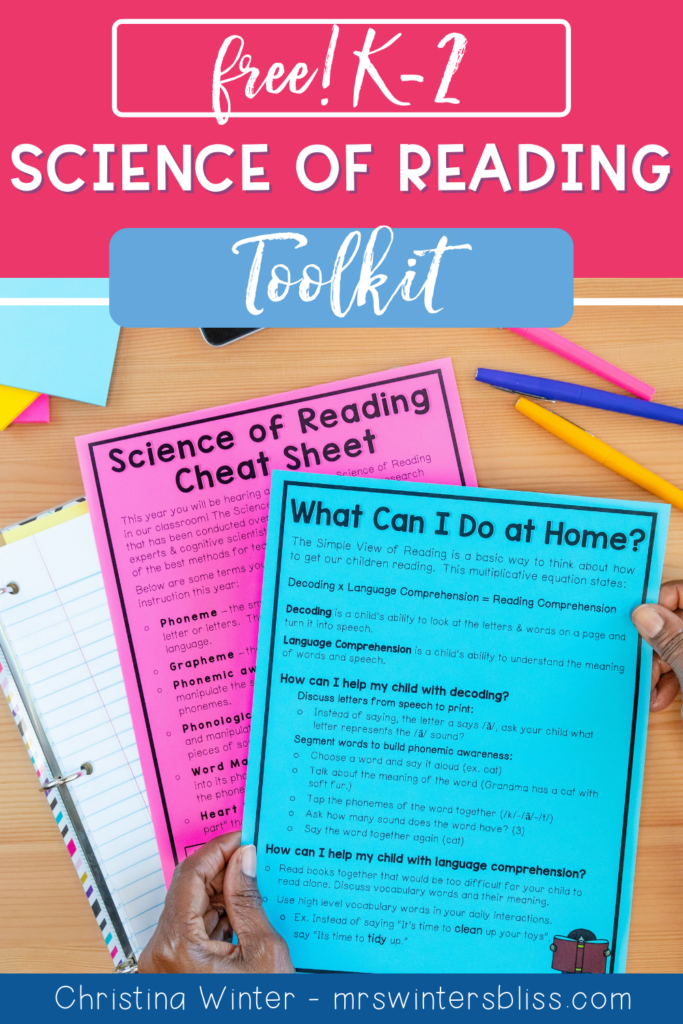
In this post, I answer the question, “what is structured literacy?” and explain how it is different from the whole language approach. I also share a FREE Science of Reading Toolkit that everything you need to get started with structured literacy in the kindergarten, first and second-grade classroom.
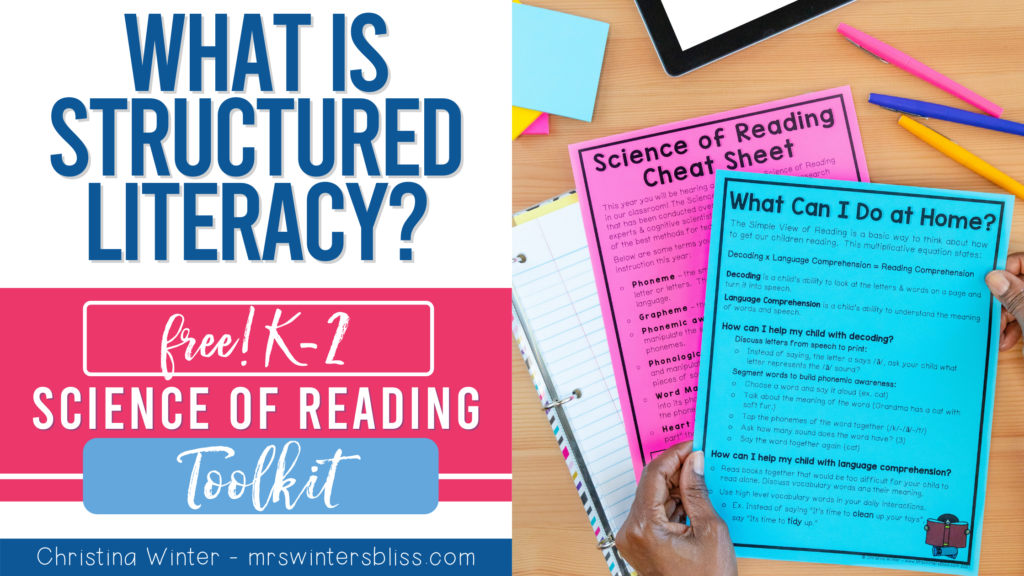
As educators, teaching students how to read is one of our biggest and most important responsibilities. While it is not an easy task, we are fortunate to be teaching at a time when there is a lot of information about how children best learn to read. This information comes from the body of research referred to as “the science of reading” and can help make our reading instruction more effective.
The science of reading is the emerging consensus from many related disciplines, based on literally thousands of studies conducted all across the world. These studies have revealed a lot about how children learn to read. They determined that structured literacy instruction is most likely to work the best for the majority of students.

Today I’m excited to answer the question, “what is structured literacy?” and discuss how it is different from other instructional approaches. Finally, I’ll leave you with a FREE Science of Reading Toolkit that includes a variety of resources to help bring structured literacy into your classroom.
What is Structured Literacy?
Structured literacy is an instructional approach that emphasizes highly explicit and systematic teaching of all key components of reading instruction. The components of Structured Literacy include:
- Phonology. Phonology is the study of the sound structure of spoken words. Phonological awareness activities includes rhyming, counting words in spoken sentence, and clapping syllables in spoken words. An important aspect of phonological awareness is phonemic awareness. This is the ability to segment words into sounds or phonemes.
- Sound-Symbol Association. Once students have developed phoneme awareness of spoken language, they learn how to map the phonemes to printed letters. Students learn to blend sounds and letters in words, as well as how to segment whole words into the individual sounds.
- Syllable Instruction. Teaching students the syllable types helps them understand how to break longer words into manageable parts. It allows them to read longer words more accurately and fluently. It helps to build their confidence as readers and gives them a strategy for attacking these longer, more challenging words
- Morphology. A morpheme is the smallest unit of meaning in the language. Structured Literacy includes the study of base words, roots, prefixes, and suffixes.
- Syntax. Syntax are the rules that tell us the sequence and function of words in a sentence in order to convey meaning. This includes grammar, sentence variation, and the mechanics of language.
- Semantics. Semantics is that aspect of language concerned with meaning. Structured Literacy must include instruction in the comprehension of written language.
Structured Literacy was originally devised to support students who struggle with reading. Many educators assume that the approach is only for remedial instruction, but there is substantial evidence to show it is an effective instructional approach for all readers.
Explicit vs. Systematic Instruction
You will hear the words explicit and systematic instruction used A LOT when people talk about structured literacy. These are important terms and it is essential we are clear on exactly what they each mean.
Explicit teaching means the objective of the lesson is clear and the teaching is intentional. The teacher takes center stage and directly teaches concepts to students. There are opportunities for guided practice with decreasing levels of support. It follows the “I do, We do, You do” model. They do not expect children to infer these skills only from exposure.

Systematic instruction is teaching that has a carefully planned sequence. It builds from easier to more difficult tasks and breaks down harder skills into smaller parts. Each lesson and activity builds upon itself. Students are never asked to do something they haven’t first been taught.

Structured Literacy vs. Whole Language
There has long been debate about how children best learn to read. Initially, in the 1980s and 1990s, many educators believed that phonics-based instruction, with its focus on the rules of decoding words, was the most effective.
Others felt that phonics instruction was boring for students and did not build a love of reading. Instead, they believed in “whole language” — the idea that immersing kids in books helps them learn to read. They thought reading was as natural as speaking and didn’t believe there was one single set of instructional principles that worked best.
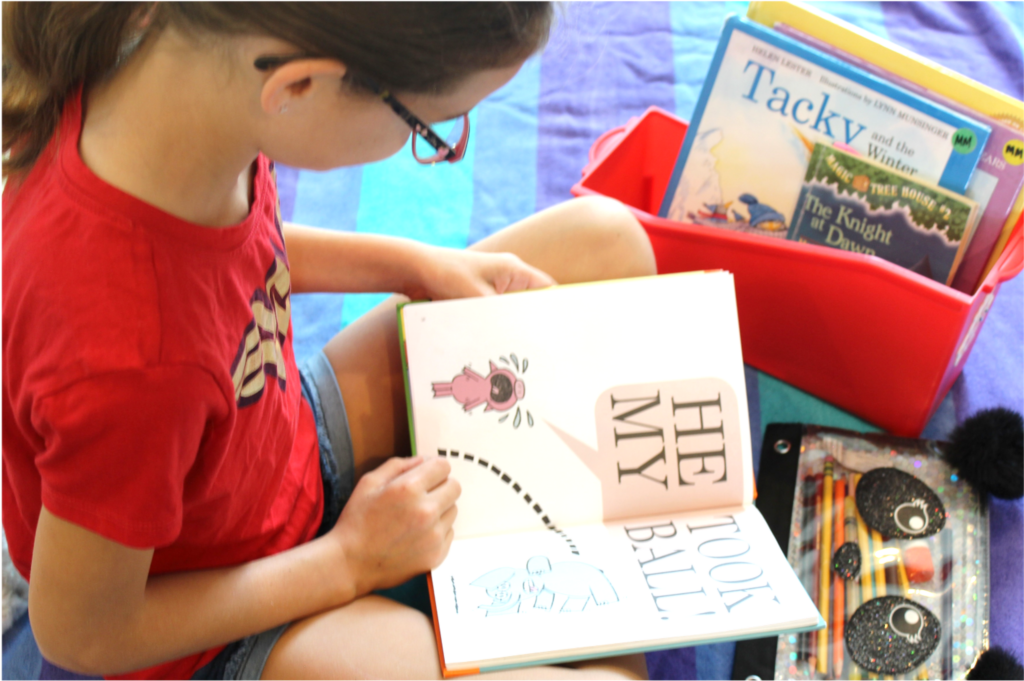
Research tells us that human beings were never born with the innate ability to read. While some children seem to begin to read effortlessly, the majority need to be taught.
Reading is different from spoken language. Spoken language is hard-wired inside the human brain. When we are babies, we naturally learn to speak through exposure to oral language. This is because the human brain is fully adapted for language processing. Reading and writing are more recent inventions in the grand scope of humanity. The written code has just not been around long enough for humans to have developed a “reading brain”! The neural circuitry that is necessary to read is created through instruction.

Whole language instruction is not highly explicit or systematic. Important foundational skills like phonemic awareness and decoding often receive limited emphasis, even for beginning and struggling readers. Additionally, in many classrooms, students spend a lot of time working independently on reading and writing tasks. Teachers do supervise this work and spend time working with individual children, but teacher-led, explicit instruction is minimal.
The good news is that there is now a renewed interest in the science behind how children learn to read. As a result, we are seeing classrooms around the world move more towards structured literacy. Teachers are beginning to provide more explicit and systematic instruction and it is helping students become stronger readers!
How to get started with Structured Literacy
Are you ready to shift your instruction to a more structured literacy approach? I know change is hard. With so much information, it can be difficult to know where to start. That’s why I created a FREE Science of Reading toolkit. It is a totally FREE resource that has everything you need to get started with structured literacy in your K-2 classroom.
The FREE Science of Reading toolkit includes:
💕 Phonics scope and sequences for kindergarten, first, and second grade
💕 A Phoneme-Grapheme Dictionary
💕 Editable parent letters that teach about the Science of Reading & the Heart Word Method
💕 Heart Word and Syllable Types Teaching Posters
💕 Word Mapping Activities- Seasonal Word Mapping Mats and Pop-it Fidget Mats
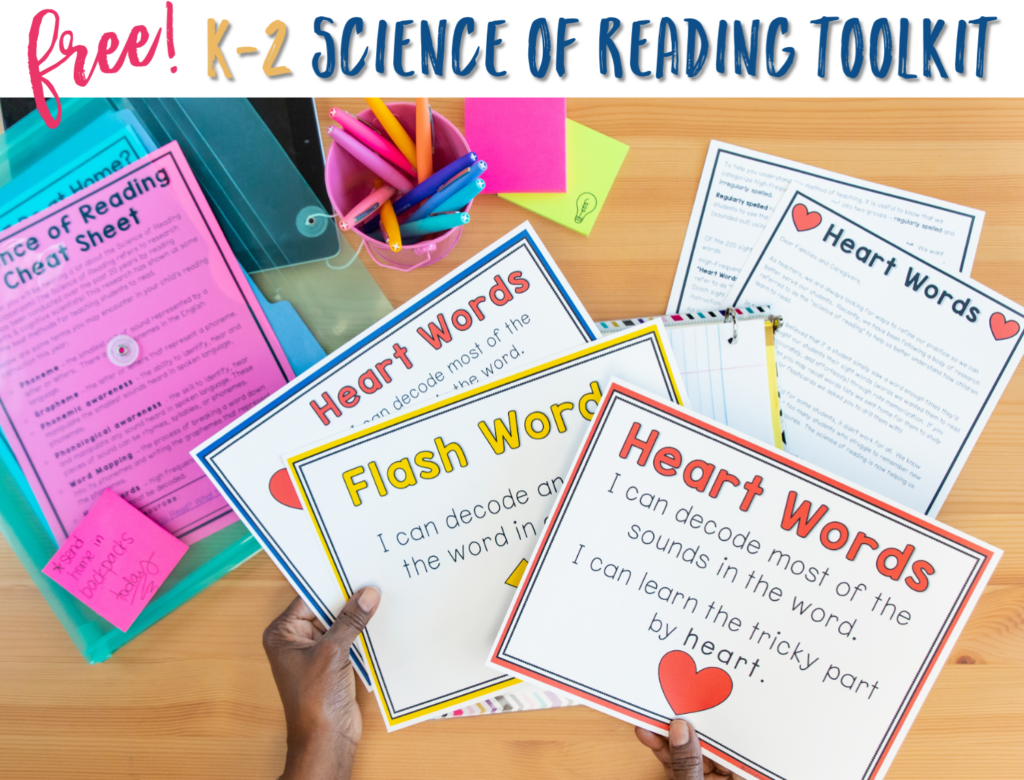
Drop your email below to get this SoR TOOLKIT instantly!
Are you eager for even more? Take look at the blog post, 3 Steps to Structured Literacy. In it, I’ve shared specific instructional changes and free sample resources to help you better align your instruction to the science of reading.
We are fortunate to be teaching at a time when we have lots of information about how students actually learn to read. When we know better, we can do better! I hope the information and free resources I’ve shared here today make it easy for you to provide your students with more effective, science-based reading instruction!
–PIN for LATER–


